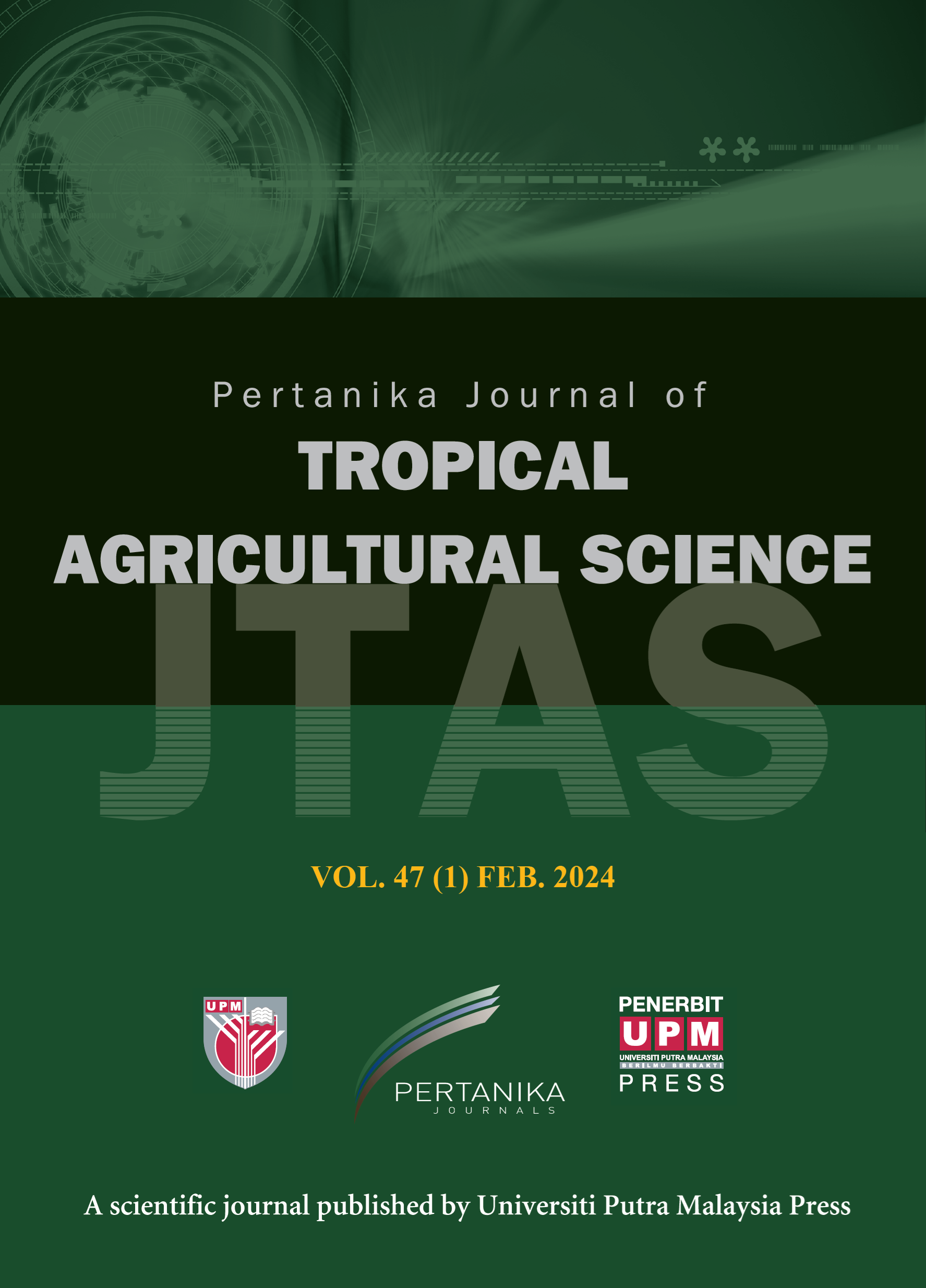PERTANIKA JOURNAL OF TROPICAL AGRICULTURAL SCIENCE
e-ISSN 2231-8542
ISSN 1511-3701
Effects of Rainfall on Durian Productivity and Production Variability in Peninsular Malaysia
Aoi Eguchi, Noordyana Hassan and Shinya Numata
Pertanika Journal of Tropical Agricultural Science, Volume 48, Issue 3, May 2025
DOI: https://doi.org/10.47836/pjtas.48.3.21
Keywords: Extreme rainfall, phenology, production, tropical fruits, yield
Published on: 2025-05-16
Durian (Durio zibethinus) is a popular and economically valuable tropical fruit tree native to Southeast Asia. It is empirically known that weather conditions can affect spatio-temporal variations in durian production. However, few studies have investigated the influence of climatic and meteorological factors on durian production and variability. This study examined the spatio-temporal patterns of durian production in Peninsular Malaysia using published statistical data from different geographical scales (peninsular, state, and district). The effects of rainfall on durian production and yield were discussed. District-level durian production data for Peninsular Malaysia for six years (2015–2021, except 2019), published by the Malaysian Ministry of Agriculture and weather data from the World Weather Online were used for the analysis. Durian production and yield did not generally fluctuate across years at the peninsular scale but showed high variability among the years at the district level. There was a significant increase in rainfall in 2017, corresponding with a significantly lower yield. Therefore, these findings suggest that durian temporal productivity and production variability are influenced by extreme rainfall. Extreme rainfall could have reduced durian productivity by inhibiting flower bud induction and flowering, decreasing pollinator activity, and causing direct damage to the fruit and trees. However, the coefficient of variation was lower in districts with higher production, suggesting that artificial factors mitigated part of the variation in productivity because the effects of extreme weather could be mitigated by a well-managed plantation system in large farms.
ISSN 1511-3701
e-ISSN 2231-8542




